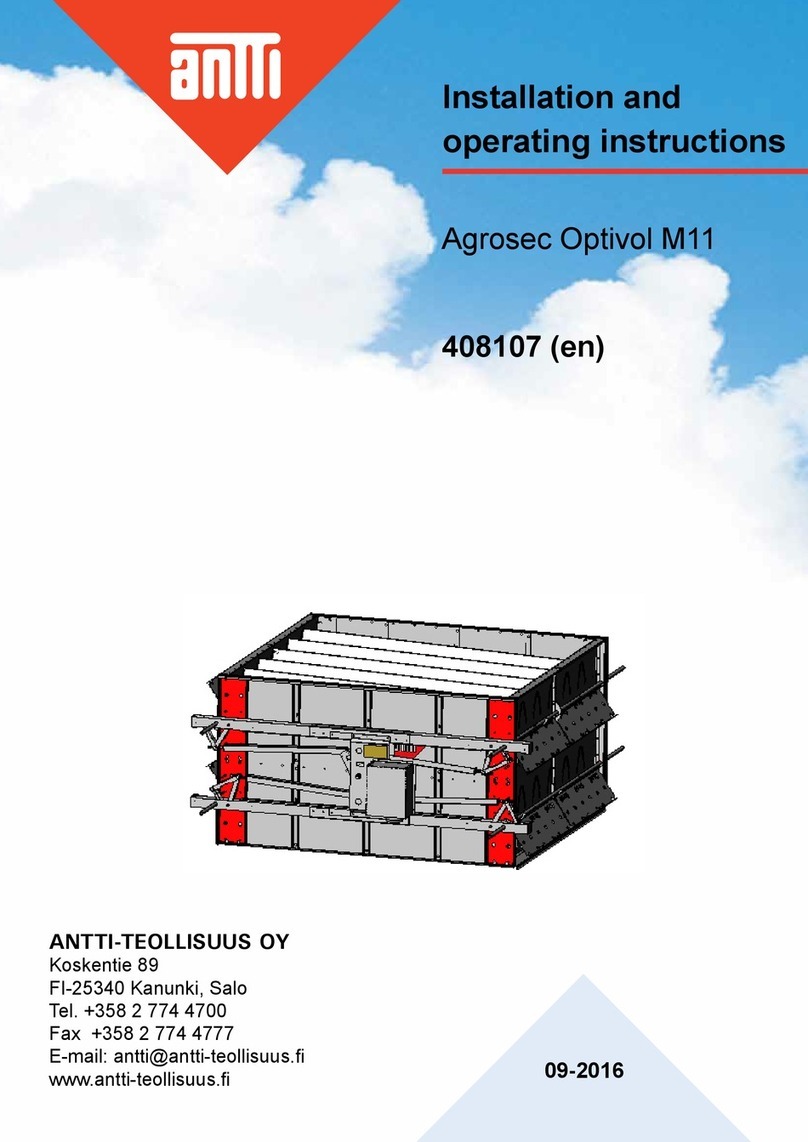
ANTTI PLUG&DRY ................................................................................................................................................ 4
SELECTING LOCATION FOR THE DRYER.......................................................................................................... 4
FOUNDATION ........................................................................................................................................................ 4
THE SPACE REQUIRED FOR THE INSTALLATION............................................................................................. 5
PRESENTATION OF THE MACHINE .................................................................................................................... 5
SAFETY.................................................................................................................................................................. 6
INSTALLATION OF THE ANTTI PLUG&DRY ........................................................................................................ 6
Principle drawings of dierent dryer types with accessories .................................................................................. 8
Installing the electric cabinet and the bracket for the frequency transformer ...................................................... 11
Principle drawing of the cable routing................................................................................................................... 12
Unit-specic cabling ............................................................................................................................................. 13
Example of connector IDs .................................................................................................................................... 14
Electric installations.............................................................................................................................................. 15
Installation ............................................................................................................................................................ 16
Installing the LTM thermostat ............................................................................................................................... 16
Installing the temperature transmitter and the re thermostat in the axial blower ................................................ 17
Installing the vacuum sensor................................................................................................................................ 19
Installing the upper limit sensor (Capacitive, adjustable) ..................................................................................... 20
Installing the temperature transmitter in the duct ................................................................................................. 21
Installing the re thermostat in the duct................................................................................................................ 23
Piping the heaters with a grain pocket.................................................................................................................. 31
Dimensioning of the basic parts viewed from the side ......................................................................................... 32
Dimensioning of the basic parts with a small intake pit viewed from above......................................................... 33
Principle dimensioning drawings for the 10 m³ and 17m³ intake pits ................................................................... 34
Dimensioning of the intake pit to be used with a chain conveyor......................................................................... 35
Installing the base and the legs............................................................................................................................ 36
Sections, air channel ends ................................................................................................................................... 36
Top tanks and cover with handrails ...................................................................................................................... 36
Installing the elevator and the ladder.................................................................................................................... 37
Bolt-assembled hopper 10m³ / 17m³ .................................................................................................................... 37
The intake pit with Skandia conveyor................................................................................................................... 37
Wire control of the 3-way divider .......................................................................................................................... 38
Fuel pipes............................................................................................................................................................. 47
Installing the debris piping for the pre-cleaner...................................................................................................... 47
STARTING UP...................................................................................................................................................... 48
Elevator ................................................................................................................................................................ 48
Pre-cleaner........................................................................................................................................................... 48
Feeder ................................................................................................................................................................. 49
Blower................................................................................................................................................................... 49
Burner................................................................................................................................................................... 49
LTM thermostat..................................................................................................................................................... 49
CONTENTS
Translation of original




























